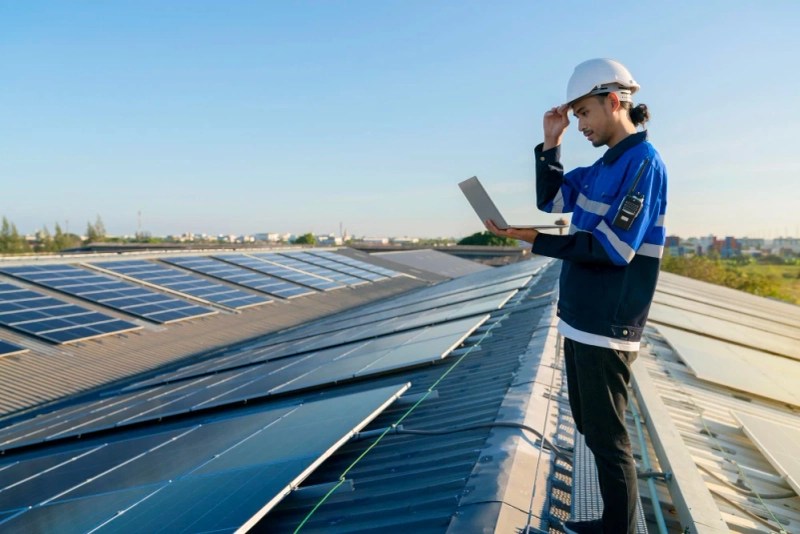The sun, our nearest star, is an almost endless source of clean and renewable energy. For homeowners looking to reduce their carbon footprint and energy bills, solar power is an attractive option. However, choosing the right type of roof-mount solar system for your home can be a daunting task.
In this guide, we'll take you through the essential steps and considerations to help you make an informed decision.
Assessing Your Energy Needs
Before diving into the world of solar energy, it's crucial to understand your home's energy needs. Start by assessing your historical energy consumption. This data will serve as a foundation for determining the size and type of solar system that's right for you.
Consider factors such as your average monthly electricity usage and any future changes in energy needs, such as adding new appliances or expanding your home.
Types of Roof-Mount Solar Systems
There are primarily two types of roof-mount solar systems:
1. Photovoltaic (PV) Solar Panels
Photovoltaic solar panels are the most common and widely used solar technology. They work by converting sunlight into electricity using semiconductor materials. Key points to consider include:
Efficiency: PV panels have improved significantly in recent years, with higher efficiency ratings.Installation: They can be installed on most types of roofs, including shingles, metal, and tiles.Cost-effectiveness: PV panels offer a solid return on investment over time.
2. Solar Roof Tiles
Solar roof tiles, also known as solar shingles, are designed to blend seamlessly with your existing roofing materials. Some key considerations are:
Aesthetics: Solar roof tiles are praised for their aesthetic appeal, as they look like traditional roofing materials.Integration: They are integrated into your roof, making them less noticeable.Cost: Solar roof tiles tend to be more expensive upfront but offer a unique look and potential long-term savings.
Roof Suitability
The suitability of your roof for solar installation is a crucial factor. Here are some aspects to evaluate:
1. Roof Type
Determine whether your roof is suitable for solar panels or tiles. Most roofs can accommodate solar installations, but some may require reinforcement.
2. Orientation and Tilt
South-facing roofs with a slight tilt are optimal for solar energy production. However, east and west-facing roofs can also work well, depending on your location.
3. Shading
Assess the amount of shade your roof receives throughout the day. Trees, nearby buildings, or chimneys could obstruct sunlight, reducing the efficiency of your solar system.
Budget Considerations
Investing in solar power involves both upfront costs and long-term savings. Consider the following financial factors:
1. Initial Investment
Calculate the total cost of purchasing and installing the solar system. Prices vary depending on the type and size of the system.
2. Incentives and Tax Credits
Research local and federal incentives, tax credits, and rebates that can significantly reduce your upfront costs.
3. Financing Options
Explore financing options such as solar loans, leases, or power purchase agreements (PPAs). These can make solar more affordable for homeowners.
Energy Storage Options
While solar panels generate electricity during the day, you may not always use them immediately. Energy storage systems, such as batteries, can store excess energy for later use. Key points to consider include:
1. Battery Types
Research different battery options, such as lithium-ion or lead-acid batteries, and choose one that suits your needs.
2. Capacity
Determine the storage capacity required to meet your energy demands during periods of low sunlight.
3. Cost and Lifespan
Evaluate the cost-effectiveness and lifespan of batteries to make an informed decision.
Maintenance and Lifespan
Solar systems are relatively low-maintenance, but they do require some care:
1. Cleaning
Periodically clean the solar panels to remove dirt, dust, or debris that can reduce their efficiency.
2. Inspections
Schedule regular inspections to ensure all components are functioning correctly.
3. Lifespan
Solar panels typically have a lifespan of 25-30 years, while inverters may need replacement after 10-15 years.
Choosing a Reliable Installer
Selecting the right solar installer is critical to a successful solar installation. Follow these steps:
1. Research
Look for experienced and certified solar installers in your area. Read reviews and ask for recommendations from friends or neighbors.
2. Quotes
Get multiple quotes to compare prices and services. Be wary of overly low-cost options, as quality may be compromised.
3. Ask Questions
Don't hesitate to ask installers about their experience, warranties, and installation process.
Environmental Impact
Solar energy significantly reduces your carbon footprint. By choosing a solar system, you contribute to a cleaner environment by reducing greenhouse gas emissions and dependence on fossil fuels.
Conclusion
In conclusion, transitioning to solar power is a sustainable and cost-effective choice for homeowners. By assessing your energy needs, understanding the types of solar systems available, evaluating your roof's suitability, and considering budget, storage, and maintenance factors, you can make an informed decision that aligns with your energy and environmental goals.
As you embark on your solar journey, remember that choosing the right solar installer is crucial for a successful installation. Embrace the power of the sun and take the first step towards a more sustainable future for your home and our planet.


